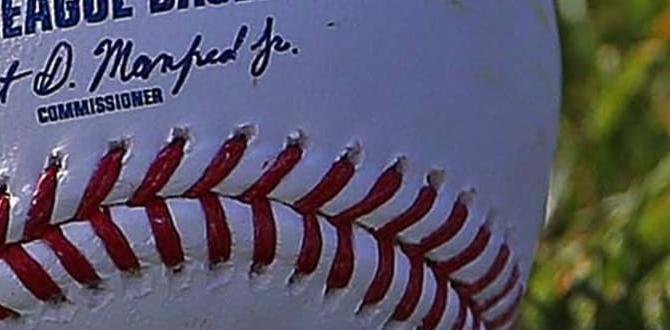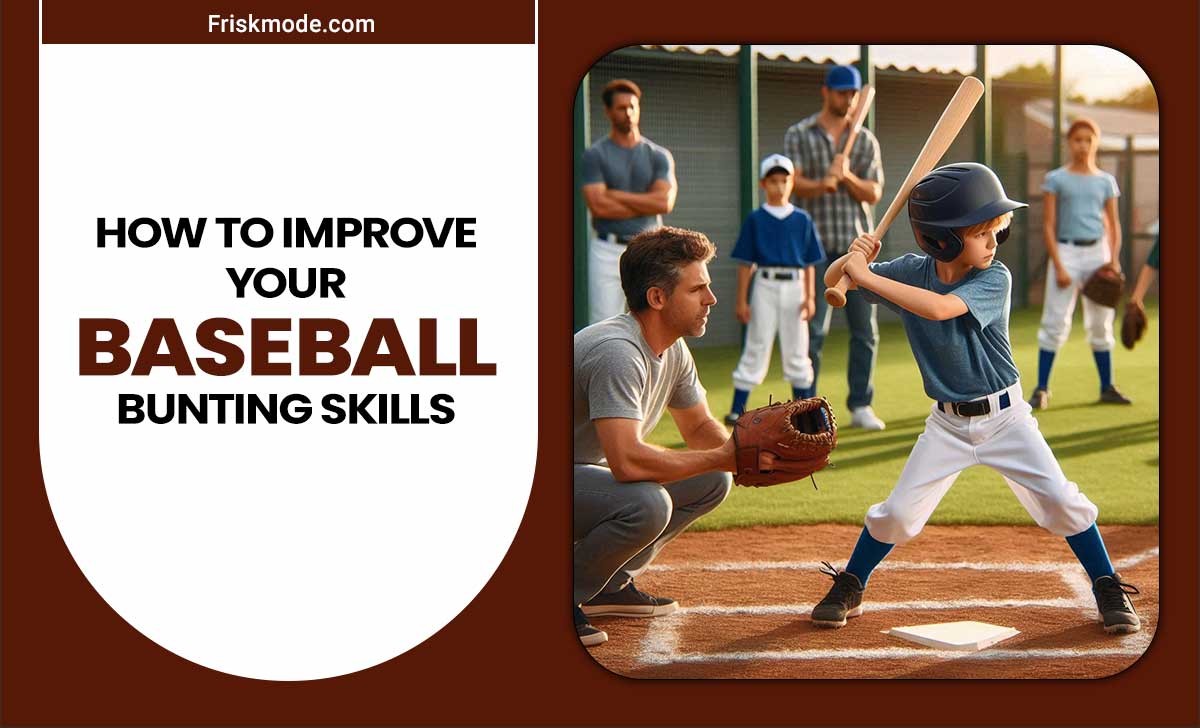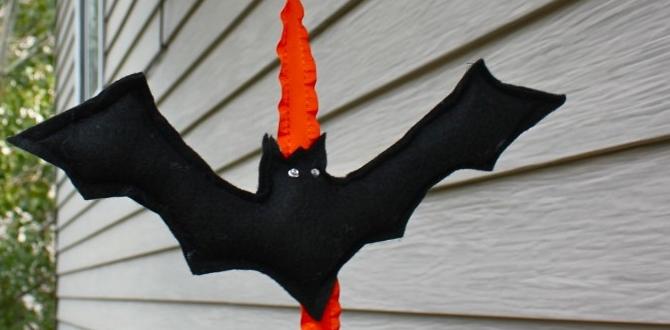Quick Summary: A catcher’s helmet for beginners is crucial for safety and confidence on the field. It protects your head from fast pitches and foul balls, allowing you to focus on developing your catching skills. Choosing the right one means balancing fit, protection, and comfort.
Catchers Helmet For Beginners: Your Essential Guide to Safety and Confidence
Stepping behind the plate as a catcher is one of the most exciting roles in baseball. But let’s be honest, it can also feel a little intimidating, right? One of the biggest concerns for new catchers is staying safe while facing fast pitches and errant swings. That’s where a solid catcher’s helmet comes in. It’s your first line of defense, and picking the right one can boost your confidence immensely. We’ll break down exactly what you need to know to find the perfect helmet, so you can focus on blocking, framing, and throwing strikes!
Why a Catcher’s Helmet is Your Most Important Piece of Gear
Think of your catcher’s helmet as your trusty shield. It’s designed to absorb impact from baseballs traveling at high speeds, foul tips that stray off the bat, and even accidental contact with players. Without it, the risk of serious injury to your head, face, and jaw is significantly higher. For beginners, learning the fundamentals of catching involves a lot of focus on technique. A good helmet removes the worry about getting hurt, allowing you to concentrate on the game and improve your skills faster.
The catcher’s position is unique in baseball. You’re constantly in the line of fire, anticipating pitches, directing the defense, and working closely with the pitcher. Your helmet doesn’t just protect you; it allows you to perform your role effectively without fear. It’s an investment in your safety, your development, and your overall enjoyment of the game.
Key Features to Look for in a Beginner Catcher’s Helmet
When you’re just starting out, the world of catcher’s gear can seem a bit overwhelming. But don’t worry, we’ll focus on the essential features that make a catcher’s helmet right for beginners. Prioritizing these will ensure you get a helmet that offers great protection without being overly complicated or cumbersome.
1. Fit and Comfort: The Foundation of Protection
This is hands down the most critical aspect. A helmet that fits properly will stay in place, provide optimal protection, and feel comfortable, allowing you to focus on the game. If it’s too big, it can shift and leave you exposed. If it’s too small, it’ll be uncomfortable and distracting.
- Adjustable Straps: Look for helmets with an easily adjustable harness system. This often involves a dial or velcro that allows you to fine-tune the fit around your head.
- Padding: The interior padding should be plush and snug, absorbing shock and preventing chafing. Removable and washable padding is a bonus for hygiene.
- Chin Strap: A secure and comfortable chin strap is vital. It keeps the helmet from tipping forward or backward during plays.
2. Protection Level: Staying Safe Behind the Plate
Beginner helmets are designed to meet safety standards, but some offer more coverage than others. For new players, a helmet that provides excellent facial protection is key.
- Steel Cage Design: Most catcher’s helmets feature a steel cage that extends over the face. For beginners, a cage that offers good visibility while fully protecting the eyes, nose, and mouth is ideal.
- ABS Shell: The outer shell is typically made of durable ABS plastic or similar materials, designed to withstand impacts.
- Foam Liner: Beneath the shell, shock-absorbing foam helps dissipate the force of a hit.
3. Visibility and Mobility: Seeing and Moving
While protection is paramount, you also need to be able to see the pitcher and move freely. A good beginner helmet balances robust protection with good peripheral vision.
- Eye Port Design: The space for your eyes should be wide enough for you to track pitches comfortably without feeling like your vision is restricted.
- Weight: While helmets need to be durable, excessively heavy ones can cause neck strain. Look for a model that feels substantial but not overly burdensome.
4. Ventilation: Staying Cool Under Pressure
Baseball games can get hot, and you’ll be doing a lot of crouching. Good ventilation helps prevent overheating and keeps you more comfortable throughout the game and practices.
- Ventilation Holes: Helmets with strategically placed vent holes allow air to circulate, helping to keep your head cool.
Types of Catcher’s Helmets for Beginners
When you’re starting out, you’ll likely encounter two main styles of catcher’s helmets:
1. Traditional Catcher’s Helmet and Mask
This is the classic setup you see often. It consists of a hard helmet with a separate, bolted-on or integrated mask. The mask provides excellent facial protection and is often made of steel bars.
Pros:
- Excellent facial protection.
- Good visibility through the cage.
- Often more budget-friendly for beginners.
Cons:
- Can be slightly heavier than combo masks.
- The mask might feel like an extra piece to manage during initial setup.
2. Catcher’s Helmet/Mask Combo (Hockey Style)
These are the more modern, sleek-looking helmets that resemble hockey goalie masks. The mask is integrated directly into the helmet structure, often with a more streamlined cage design.
Pros:
- Often lighter and more compact.
- Sleek design can improve visibility slightly for some players.
- Convenient, all-in-one design.
Cons:
- Can sometimes be more expensive.
- The cage design might slightly alter the viewing angle for some individuals compared to a traditional mask.
For beginners, either style can work well. The most important thing is how it fits, feels, and protects you. Try both styles on if you can to see which one feels most natural and secure.
Looking for specific recommendations? Many reputable brands like Rawlings, Wilson, and EvoShield offer excellent options for developing players.
Sizing Your Catcher’s Helmet: A Step-by-Step Guide
Getting the right size is crucial for safety and comfort. A poorly fitting helmet won’t protect you effectively. Follow these simple steps to ensure a snug and secure fit.
What You’ll Need:
- A flexible measuring tape (or a piece of string and a ruler).
- A mirror (helpful for checking fit).
Steps:
- Measure Your Head Circumference: This is the most important measurement. Wrap the measuring tape around the largest part of your head, about one inch above your eyebrows and ears. Make sure the tape is snug but not tight. If you’re using string, mark where the ends meet and then measure the string with a ruler.
- Consult the Manufacturer’s Sizing Chart: Once you have your head circumference, compare it to the sizing chart provided by the helmet manufacturer. These charts are usually available on the product packaging, the manufacturer’s website, or the retailer’s website. Sizing is often categorized into Youth, Intermediate, and Adult, with specific inch or centimeter ranges for each.
- Try It On: If possible, always try the helmet on before buying. Place it on your head. It should sit level (not tilted back or forward), covering your forehead.
- Check for Snugness: The helmet should feel snug all around your head. Gently shake your head from side to side and up and down. The helmet should not move excessively.
- Adjust the Harness: Most catcher’s helmets have an adjustable harness system (usually a dial or straps at the back). Tighten this until the helmet feels secure but not uncomfortable. You should be able to feel it grip your head without causing pressure points.
- Secure the Chin Strap: Fasten the chin strap. You should be able to fit one or two fingers between the strap and your chin. It should be comfortable enough not to chafe but tight enough to prevent the helmet from coming off.
- Check Your Vision: Look in the mirror. Ensure the cage provides good unobstructed vision of the pitcher. You should be able to see clearly without the bars getting in your way.
- Assess Comfort: Wear the helmet for a few minutes. Does it feel heavy? Are there any areas of discomfort or pinching? It should feel secure and relatively comfortable.
It’s important to know that different brands may size slightly differently, so always refer to the specific brand’s chart. If you’re between sizes, it’s often better to go with the smaller size and adjust the harness, as long as it still feels comfortable.
Essential Catcher’s Gear to Pair with Your Helmet
Your helmet is a critical piece, but it’s part of a larger system designed to keep you safe and effective behind the plate. Here’s other essential gear every beginner catcher needs:
1. Chest Protector
This gear covers your chest and abdomen, protecting you from foul tips and impacts. For beginners, look for a chest protector that offers good coverage, is adjustable for a snug fit, and allows for flexibility in movement.
2. Leg Guards
These protect your shins, knees, and feet. They typically consist of hinged knee pads and shin guards that strap securely to your legs. Ensure they have good padding and a solid shell to absorb impact. Proper fitting leg guards are essential for blocking pitches effectively.
3. Catcher’s Mitt
A catcher’s mitt is different from a fielder’s glove. It’s larger, more padded, and has a deep pocket designed to catch fast pitches and make transitions to throwing quick. For beginners, a mitt labeled as “intermediate” or “youth” with good padding is a great starting point.
4. Throat Protector
This is a small, usually plastic or rubber piece that attaches to the bottom of the catcher’s mask. It protects the throat and is a mandatory piece of equipment in many leagues. Always ensure yours is properly attached.
5. Sliding Shorts/Compression Gear
While not directly impact protection, these can help prevent chafing from pads and athletic support. Some players also wear padded sliding shorts for extra comfort and protection during dives or slides.
Wearing this full set of gear can feel like a lot at first, but it’s designed to work together, providing comprehensive protection so you can play with confidence. The Official Rules of Major League Baseball also outline requirements for protective equipment, emphasizing safety for all players.
Maintaining Your Catcher’s Helmet
Just like any piece of sports equipment, proper care will extend the life of your catcher’s helmet and ensure it continues to offer the best protection. Keep these simple maintenance tips in mind:
Cleaning Your Helmet
- Shell: Wipe down the outer shell with a damp cloth and mild soap or an athletic gear cleaner. Avoid abrasive cleaners, as they can damage the plastic.
- Padding: Most helmets have removable padding. Take it out and wash it by hand with mild soap and cool water. Let it air dry completely. Sunlight can degrade plastic and foam, so avoid prolonged direct sun exposure.
- Mask: Wipe the cage with a damp cloth. Check for any bends or damage.
Storage
- Dry Location: Always store your helmet in a dry place. Moisture can lead to mold or mildew, especially on the padding.
- Avoid Extreme Temperatures: Don’t leave your helmet in a hot car or direct sunlight for extended periods, as extreme heat can degrade the materials.
- Ventilation: If possible, store it in a place where it can get some air circulation.
Inspection
- Regular Checks: Periodically inspect your helmet for any cracks in the shell, bent or damaged cage wires, or worn-out padding.
- Strap Integrity: Check the chin strap and any adjustment straps for fraying or damage.
- Fit: Even if it looks fine, ensure it still fits snugly. Materials can wear down over time.
If you notice any significant damage, it might be time to consider replacing your helmet to ensure your safety. A helmet’s protective qualities can be compromised after a significant impact, even if it doesn’t look severely damaged. Always err on the side of caution when it comes to head protection.
Common Concerns for Beginner Catchers and Their Helmets
It’s totally normal to have questions when you’re new to a position like catcher. Here are some common concerns beginners have about catcher’s helmets and straightforward answers:
Q1: How often should I replace my catcher’s helmet?
A: Helmets should be replaced if they sustain a significant impact (like a direct hit from a hard-thrown ball or a severe collision), if the shell develops cracks, or if the padding becomes excessively worn and offers less cushioning. For general use, a helmet can last several seasons, but regular inspection is key.
Q2: Will I be able to see clearly with a catcher’s helmet on?
A: Yes! Modern catcher’s helmets are designed with good visibility in mind. The cage allows for clear vision of the pitcher and the field. The key is ensuring you have the correct size and that the helmet sits properly on your head.
Q3: Is it okay to wear a batting helmet instead of a catcher’s helmet?
A: Absolutely not. Batting helmets are designed for impacts from the front (a pitched ball or a swing at the plate). Catcher’s helmets are designed to protect the entire face from a much wider range of impacts, including foul tips, wild pitches, and collisions. They offer far more protection than a batting helmet.
Q4: My helmet feels a little loose even when adjusted. What should I do?
A: Ensure you’ve adjusted the internal harness correctly. If it still feels loose, it might be that the helmet is too large for your head size. Double-check the sizing chart against your head circumference. Sometimes, adding a sweatband or a thicker skull cap can help take up minor slack, but for significant looseness, a proper fit is essential and worth getting the correct size.
Q5: How do I clean the inside of my catcher’s helmet?
A: For most helmets, the best approach is to remove the interior padding and wash it by hand with mild soap and cool water. Allow it to air dry completely. You can wipe down the hard shell with a damp cloth and a bit of mild soap. Avoid harsh chemicals or submerging the entire helmet in water.
Q6: Do I need a throat protector?
A: Yes, it’s highly recommended and often required by league rules. A throat protector attaches to the bottom of your mask and guards against foul tips or impacts to the neck/throat area. It’s a small but vital piece of safety gear.
The Importance of Proper Technique
While your helmet is your primary safety tool, developing good catching technique is your second line of defense. Proper form will help you block pitches more effectively and reduce the number of foul tips that make it near your face. Here are a few quick tips:
- Get in the Squat: Always maintain a strong, athletic squat. Your knees should be bent, and your chest up. This allows you to move quickly and get your body behind the ball.
- Receive the Pitch: Focus on catching the ball in the center of your mitt with a soft hand, “giving” a little as the ball enters the pocket. This helps quiet the pitch and prevents it from popping out.
- Block Everything: When a pitch is in the dirt or out of the zone, get your body in front of it. Bring your knees together, drop your chest, and use your mitt and body to stop the ball from getting past you. Your helmet and chest protector are there to help absorb the impact.
- Be Aware: Always be aware of where the ball is coming from and where runners might be. Your helmet has a cage, but peripheral vision is still important.
Practicing these techniques consistently will not only make you a better catcher but also make you feel more secure behind the plate. Resources like <a href="https://www.usabdevelop.com/page/show/





